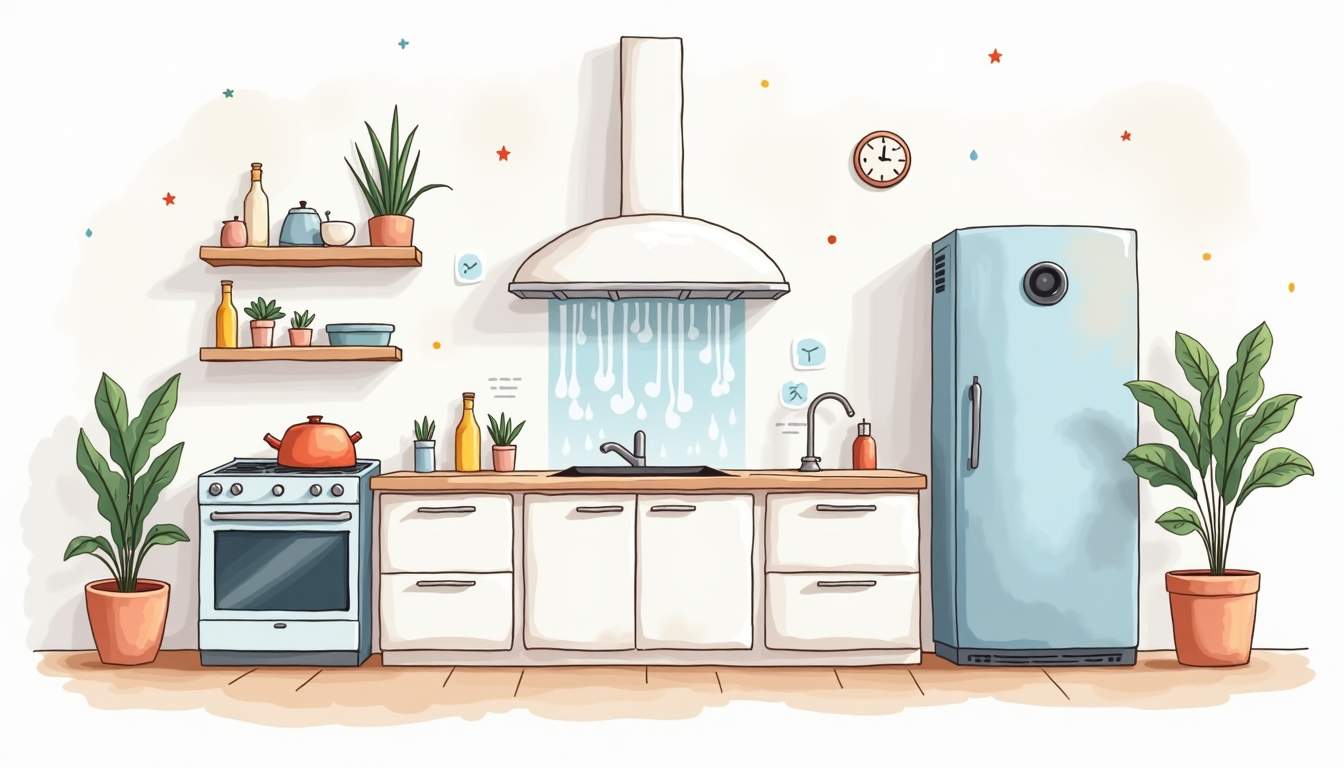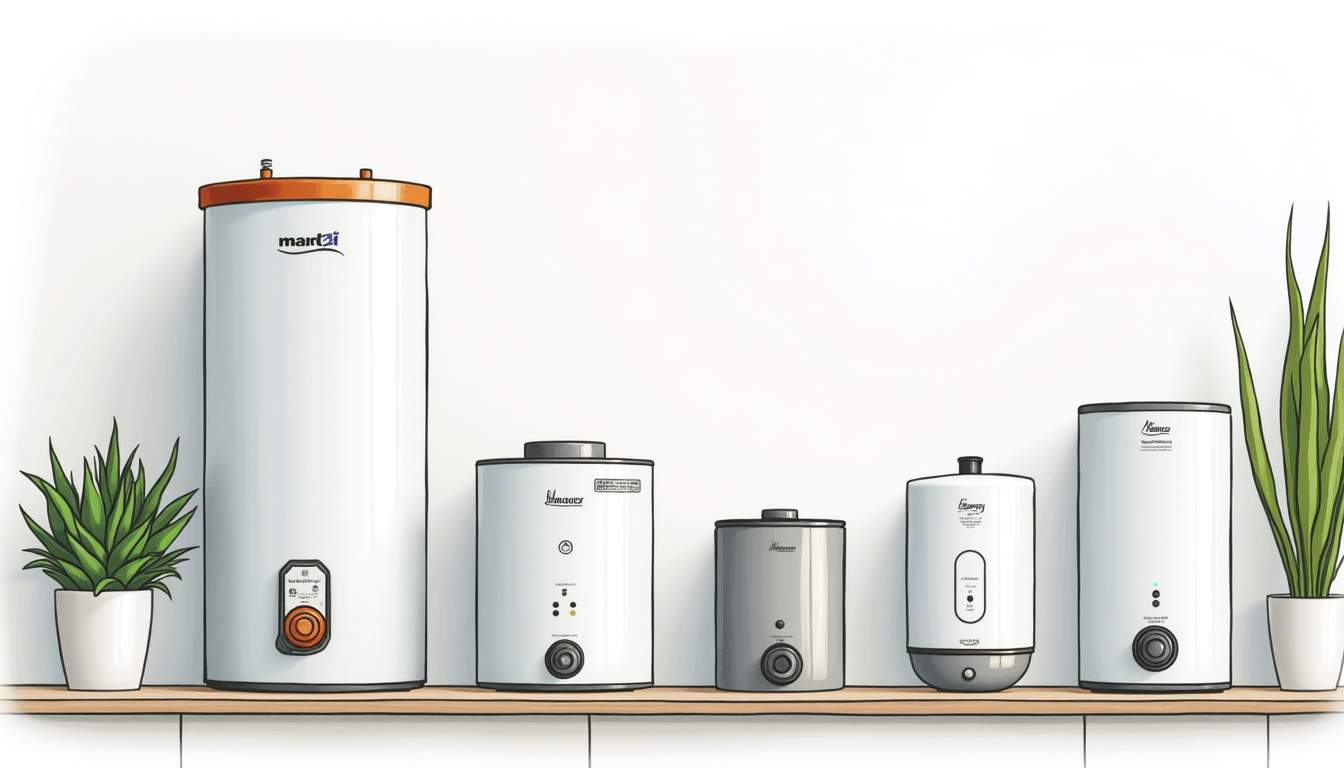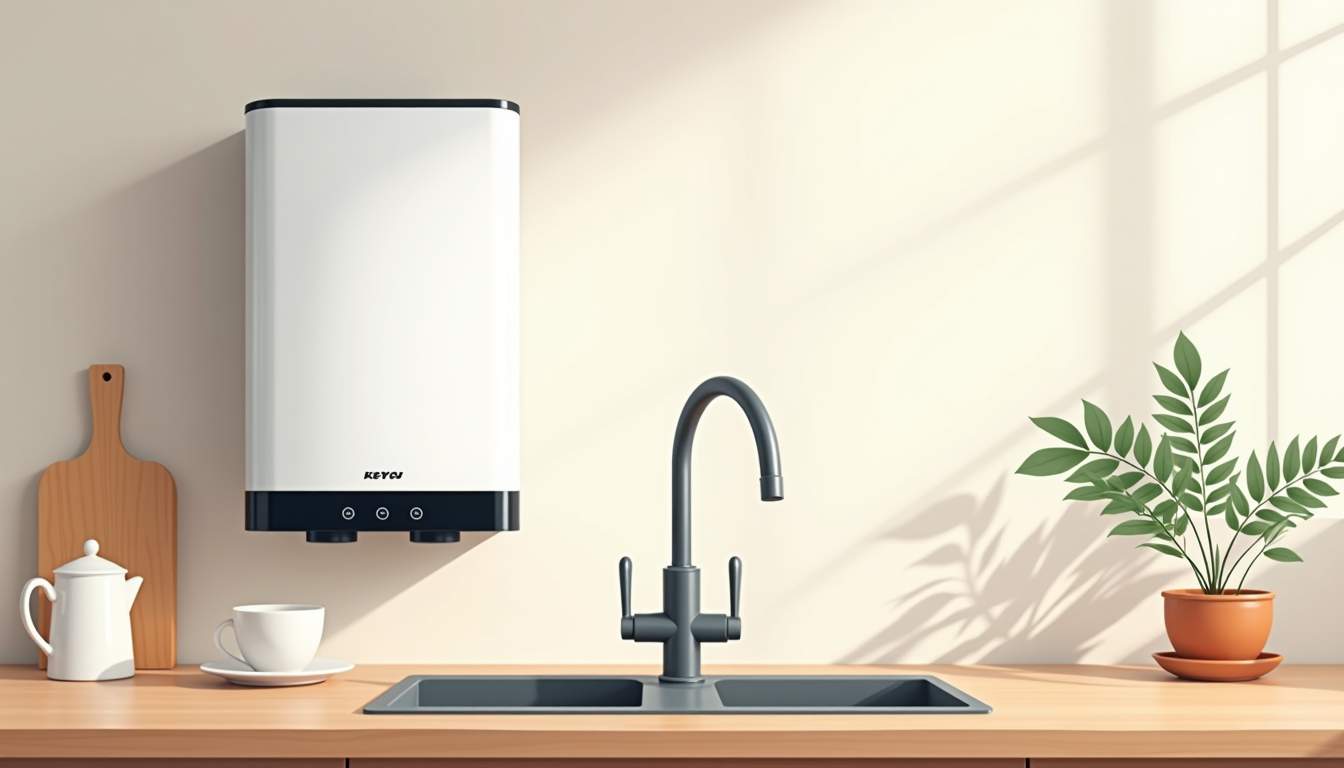
Imagine stepping into a chilly bathroom on a winter morning, only to be greeted by a burst of hot water within seconds. That’s the magic of an instant water heater. No waiting, no wasted water, just hot water on demand. But picking the right one for your home can feel overwhelming. There are so many options, features, and technical details to consider. This guide breaks down everything you need to know to make a confident choice.
Understanding How Instant Water Heaters Work
Instant water heaters, also known as tankless or on-demand water heaters, heat water directly as it flows through the device. Unlike traditional heaters with bulky tanks, these units don’t store hot water but warm it up instantly when you turn on the tap.

This means you get hot water only when you need it, which can save energy and reduce your utility bills. However, the flow rate and power capacity determine how much hot water you get at once. Knowing this helps you avoid surprises like lukewarm showers or insufficient hot water when multiple taps run simultaneously. Additionally, many modern instant water heaters come equipped with advanced technology that allows for precise temperature control, ensuring that the water is heated to your desired level without the risk of scalding or sudden temperature fluctuations.
Moreover, the installation of instant water heaters can be a great opportunity to upgrade your home’s plumbing system. Many units are designed to be more efficient and environmentally friendly, often featuring smart technology that can be integrated with home automation systems. This means you can monitor and adjust your water heating needs remotely, further enhancing convenience and energy savings.
Electric vs. Gas Instant Water Heaters
Electric instant water heaters are compact and easy to install, making them popular choices for small households or point-of-use applications like a single bathroom or kitchen sink. They require a good electrical supply but don’t need ventilation.
Gas-powered models, on the other hand, use natural gas or propane and generally deliver higher flow rates, suitable for larger homes or multiple bathrooms. They need proper venting to exhaust combustion gases safely. While installation is more complex, gas heaters often have lower operating costs depending on local energy prices. Additionally, gas models tend to perform better in colder climates, where the incoming water temperature is significantly lower, ensuring a consistent supply of hot water even during the winter months. It’s also worth noting that advancements in technology have led to the development of hybrid models that combine both electric and gas functionalities, offering flexibility and efficiency tailored to your specific needs. For professional installation or guidance, you can visit Plumber Singapore for reliable support.
Assessing Your Hot Water Needs
Before choosing a model, it’s crucial to evaluate how much hot water your household uses and where. This will determine the size and power of the heater you need. Understanding your hot water consumption can help you avoid the inconvenience of running out of hot water during peak usage times, ensuring that your daily routines run smoothly.
Calculate Your Peak Hot Water Demand
Think about the number of bathrooms, kitchen sinks, and appliances like dishwashers or washing machines that use hot water. For instance, a shower typically requires 2 to 3 gallons per minute (GPM), while a kitchen faucet uses about 1.5 GPM. Additionally, consider the habits of your household members; for example, if multiple family members tend to shower back-to-back in the morning, this can significantly impact your hot water needs.
Add up the flow rates of fixtures that might be used at the same time to estimate your peak demand. For example, if two showers and a kitchen sink run simultaneously, your peak demand could be around 6 to 7.5 GPM. Choose a heater that can handle this flow rate without dropping the temperature. It’s also wise to account for any future changes in your household, such as adding a bathroom or welcoming new family members, which may increase your hot water requirements.
Consider Temperature Rise
Temperature rise is the difference between the incoming cold water temperature and the desired hot water temperature. In colder climates, incoming water can be as low as 40°F, while most people prefer water around 105°F for showers. This factor is particularly important in regions with extreme seasonal temperature variations, where the incoming water temperature can fluctuate significantly.
If your incoming water is 50°F and you want 105°F, the heater must raise the temperature by 55°F. Higher temperature rises require more powerful units. Check the specifications of heaters to see their maximum temperature rise at different flow rates. Additionally, consider the efficiency ratings of various models, as a more efficient heater can provide the necessary temperature rise while consuming less energy, ultimately saving you money on utility bills over time. Understanding these details can help you make an informed decision that aligns with both your hot water needs and your budget.
Key Features to Look For
Not all instant water heaters are created equal. Certain features can enhance performance, safety, and convenience.
Flow Rate Capacity
As mentioned, the flow rate is critical. Always choose a unit that can deliver the hot water volume you need. Oversizing can waste energy, while undersizing leads to poor performance. Understanding your household’s peak demand times can help in selecting the right capacity. For instance, if multiple showers or appliances are used simultaneously, a higher flow rate will ensure that everyone has access to hot water without interruption.
Energy Efficiency
Look for heaters with high energy efficiency ratings. Electric models often have efficiency above 95%, while gas models vary but can be very efficient with condensing technology. Efficient heaters save money and reduce environmental impact. Additionally, some manufacturers offer models with advanced insulation to minimize heat loss, further enhancing energy savings. Investing in an energy-efficient unit not only benefits your wallet but also contributes to a greener planet by reducing overall energy consumption.
Safety Features
Safety is paramount when dealing with hot water and electricity or gas. Features like automatic shut-off, overheating protection, and anti-scald technology are essential. Some models also have freeze protection, which is useful in colder climates. Moreover, many modern units come equipped with leak detection systems that can alert you to potential issues before they escalate, providing peace of mind and protecting your home from water damage.
Digital Controls and Displays
Modern instant water heaters often come with digital thermostats, allowing precise temperature control. Some even have smartphone connectivity for remote monitoring and adjustments, adding convenience. This tech-savvy feature not only allows you to set the perfect temperature from anywhere in your home but also enables you to track your usage patterns over time. Some models even provide maintenance reminders and alerts, ensuring that your heater operates efficiently and lasts longer, ultimately saving you time and money on repairs.
Installation Considerations
Where and how you install the water heater affects its performance and your overall satisfaction.
Location and Space
Instant water heaters are compact and can be installed close to the point of use, reducing heat loss in pipes. Decide whether you want a centralized system serving the whole house or multiple smaller units near bathrooms and kitchens.
Electrical and Gas Supply Requirements
Electric heaters may require upgrading your home’s electrical panel or wiring to handle high current loads. Gas heaters need proper venting and gas line connections. Always consult a licensed professional to assess your home’s infrastructure.
Maintenance and Longevity
Instant water heaters generally require less maintenance than tank models, but periodic descaling is necessary, especially in areas with hard water. Check the warranty and service options available for the brand you choose.
Budgeting and Cost Factors
Price varies widely depending on capacity, fuel type, and features.
Initial Purchase and Installation Costs
Electric models tend to be less expensive upfront, but if your electrical system needs upgrades, installation costs can rise. Gas models usually cost more and require professional installation for venting and gas connections.
Operating Costs
Consider your local energy rates. Gas may be cheaper in some areas, while electricity is more cost-effective in others. Instant water heaters save energy by heating water only when needed, but fuel prices still impact your monthly bills.
Long-Term Savings
While tankless heaters often cost more initially, their energy efficiency and longer lifespan-typically 20 years or more-can make them more economical over time. Factor in maintenance and potential repair costs as well.
Popular Brands and Models to Consider
Several well-regarded brands offer reliable instant water heaters with various features and price points.

Electric Models
- Stiebel Eltron Tempra Series: Known for precise temperature control and high efficiency.
- EcoSmart ECO 27: A popular choice for whole-house electric heating with self-modulating technology.
- Rheem RTEX Series: Offers a range of sizes and digital controls at reasonable prices.
Gas Models
- Rinnai RUR Series: High efficiency condensing units with recirculation pumps for instant hot water.
- Noritz NRCB Series: Compact and energy-efficient, suitable for various household sizes.
- Takagi T-KJr2 Series: Reliable and affordable with good flow rates for small to medium homes.
Tips for a Smooth Purchase and Installation
Choosing the right instant water heater is just the first step. Proper installation and usage ensure you get the most out of your investment.
Get a Professional Assessment
Have a plumber or HVAC specialist evaluate your home’s hot water needs and infrastructure. They can recommend the best type and size and identify any upgrades needed.
Compare Warranties and Support
Look for brands that offer solid warranties and accessible customer service. This can save headaches down the road.
Plan for Maintenance
Ask about maintenance requirements and whether local service providers are familiar with the model you choose. Regular upkeep extends lifespan and maintains efficiency.
Test the System Thoroughly
After installation, test all hot water outlets to ensure consistent temperature and flow. Address any issues immediately with your installer.
Final Thoughts
Instant water heaters offer convenience, energy savings, and endless hot water on demand. The key is matching the unit to your household’s specific needs and ensuring proper installation. Take your time to research flow rates, temperature rise, fuel types, and features. Don’t hesitate to consult professionals and read user reviews.

With the right choice, you’ll enjoy the comfort of instant hot water every day without the waste or wait. It’s a smart upgrade that pays off in comfort and savings.